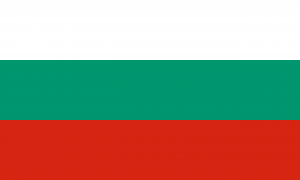Difference between revisions of "Language/Bulgarian/Grammar/Present-Tense"
m (Quick edit) |
m (Quick edit) |
||
| Line 1: | Line 1: | ||
<span pgnav> | |||
{| class="wikitable pg_template_nav" | |||
|[[Language/Bulgarian/Culture/Literary-Translation|◀️ Literary Translation — Previous Lesson]] | |||
|[[Language/Bulgarian/Grammar/Perfective-and-Imperfective-Verbs|Next Lesson — Perfective and Imperfective Verbs ▶️]] | |||
|} | |||
</span> | |||
{{Bulgarian-Page-Top}} | {{Bulgarian-Page-Top}} | ||
| Line 104: | Line 111: | ||
{{Bulgarian-Page-Bottom}} | {{Bulgarian-Page-Bottom}} | ||
<span links></span> | <span links></span> | ||
<span pgnav> | |||
{| class="wikitable pg_template_nav" | |||
|[[Language/Bulgarian/Culture/Literary-Translation|◀️ Literary Translation — Previous Lesson]] | |||
|[[Language/Bulgarian/Grammar/Perfective-and-Imperfective-Verbs|Next Lesson — Perfective and Imperfective Verbs ▶️]] | |||
|} | |||
</span> | |||
Revision as of 18:15, 29 March 2023
| ◀️ Literary Translation — Previous Lesson | Next Lesson — Perfective and Imperfective Verbs ▶️ |
As a Bulgarian language teacher with 20 years of experience, I find the present tense to be one of the most important aspects of Bulgarian grammar. It's essential for students to learn how to use the present tense of Bulgarian verbs properly. So, in this lesson, you'll learn everything you need to know about the present tense in Bulgarian.
Finish this lesson and explore these related pages: CARDINAL NUMERALS – Бройни числителни & Negation.
The Present Tense
The present tense is used to describe actions or events that are happening right now. In Bulgarian, the present tense has three types of endings depending on the verb conjugation. The three types of endings are for the First, Second, and Third Persons.
Here is an overview table of present tense verb endings:
| Person/Subject | First Conjugation | Second Conjugation | Third Conjugation |
|---|---|---|---|
| I/ Я | -а | -я | -а |
| You/ Ти | -аш | -иш | и |
| He/ Той | -а | -и | -ва |
| She/ Тя | -а | -и | -ва |
| We/ Ние | -аме | -име | -ем |
| You (plural)/ Вие | -ате | -ите | -ете |
| They/ Те | -ат | -ят | -ят |
Here are some examples:
- Пе́я - I sing - аз пе́я, ти пе́еш, той/тя́ пе́е, ние пе́ем, вие пе́ете, те пе́ят (peya)
- Говоря - I speak - аз говоря, ти говориш, той/тя́ говори́, ние говори́м, вие говори́те, те говоря́т (govorya)
Please note that these are only examples of the three types of endings for the present tense. There are exceptions to these rules, and students should learn the endings of each verb conjugation pattern.
Tips for Using the Present Tense
1. Use the present tense to describe actions or situations that are currently taking place.
2. Use the present tense to make general statements or express habitual actions.
3. Don't forget about irregular verbs that don't follow the patterns like "съм" (am), "имам" (have), and "искам" (want).
4. Be careful with verbs that sound similar but have different meanings like "седя" (sit) and "съм" (am).
5. Remember to match the verb with the person or subject.
Practice Exercises
1. Conjugate the verbs "писа" (write) and "отивам" (go) in the present tense.
2. Translate the following sentences into Bulgarian using the present tense:
- I am a student.
- She likes to dance.
- We eat breakfast every day.
- They don't work on weekends.
- Do you speak Bulgarian?
3. Write three sentences in Bulgarian using the present tense to describe what you are doing now.
Sources
- Bulgarian verbs - Wikipedia
- Bulgarian Tenses: Expressing the Past, Present, and Future
- Bulgarian grammar - Wikipedia
- APPENDIX THE MAJOR CHARACTERISTICS OF THE BULGARIAN ...
Videos
Verbs in Bulgarian: Personal Pronouns, Present, Past and Future ...
Other Lessons
- Conditional Mood
- Adverbs – Наречия
- Comparatives and Superlatives
- Cases
- PRESENT SIMPLE TENSE – Сегашно време
- PERSONAL PRONOUNS – Лични местоимения
- Past Tense
- SHORT POSSESSIVE PRONOUNS – Кратки притежателни местоимения
- Vowels
- Types of Questions – Видове въпроси
| ◀️ Literary Translation — Previous Lesson | Next Lesson — Perfective and Imperfective Verbs ▶️ |
